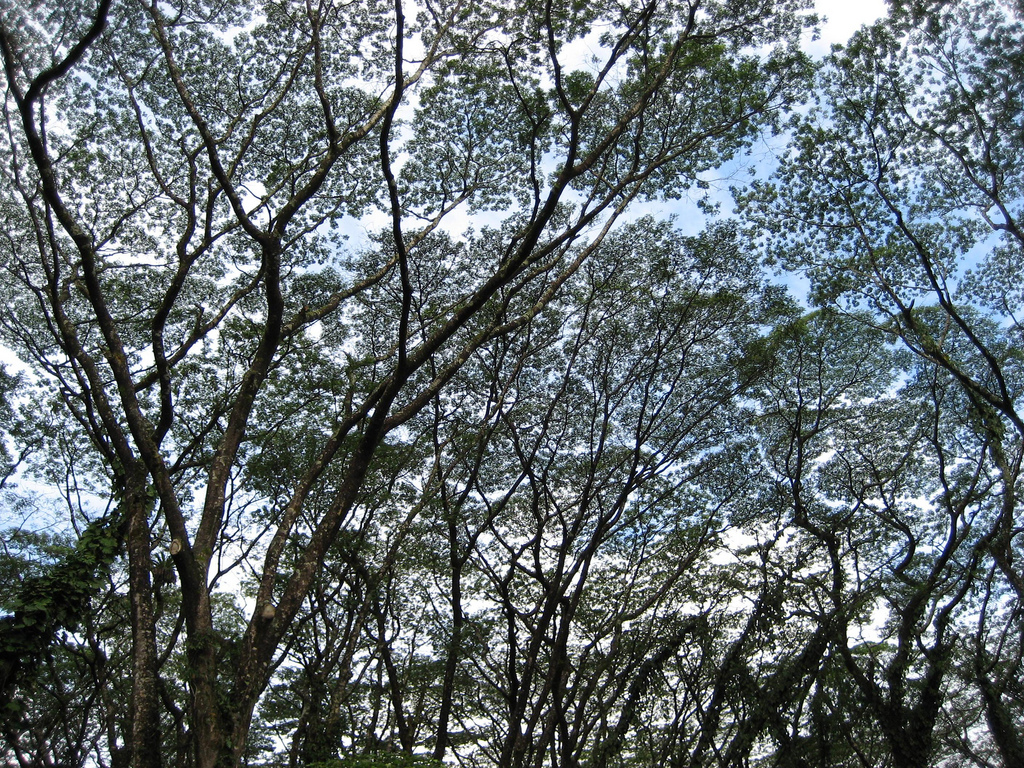- Think of the practice or attitude that you most wish to change. Be honest with yourself. And be realistic!
- Take a few minutes to approach it in a “Four Worlds” manner:
- Briyah (Concrete) – Just what is it you do? Be specific.
- Yetzirah (Feelings) – How do you feel as you are doing it? How do you feel just after doing it?
- Assiyah (Knowledge) – Can you create an alternate plan for yourself to analyze the situation and change the response?
- Atzilut (Being) – Imagine the Higher Power within, and visualize yourself as acting consistently with that higher self.
- Now summarize the behaviour and the levels of awareness of it into ONE word.
- Go outside, get a leaf.
- Get a water-soluble marker.
- Write that word on the leaf. (Alternate version: Skip the leaf. Write the word on your hand)
- Stick it in your pocket (perhaps wrapped in a bit of plastic wrap to keep it fresh and legible. Do it in advance if possible, so you can walk around with Tashlikh consciousness for a few days before you first hear the shofar.
- Bring the leaf with you to Tashlikh service or to your own personal meditation with moving water.
- Throw the leaf (minus the plastic wrap!) into the water. (Alternate version: With awareness that your feet are on the ground, move your hands from the air above to the water below). Let your “sin” be washed away.
- Spend the year working on your plan. Let each sighting of moving water be your reminder.
Avi Dolgin’s “A Ten-Step, Four-Worlds, One-Earth Tashlikh is based on teachings from R’ Goldie Milgrom, R’ Hanna Tiferet Siegel and others.
From “Tashlikh” in wikipedia (and corrected for accuracy):[1] ”Tashlikh” in wikipedia, accessed September 11, 2011.
Tashlikh (Hebrew: תשליך, meaning “casting off”) is a long-standing Ashkenazi Jewish ritual practice usually performed on the afternoon of Rosh Hashanah, the Jewish New Year, however it can be said up until Hoshana Rabbah.
The name “Tashlikh” and the practice itself are derived from the book of the prophet Micah 7:19, which is recited during the Tashlikh ritual:
יָשׁ֣וּב יְרַֽחֲמֵ֔נוּ יִכְבֹּ֖שׁ עֲוֹֽנֹתֵ֑ינוּ וְתַשְׁלִ֛יךְ בִּמְצֻלֹ֥ות יָ֖ם כָּל־חַטֹּאותָֽם׃ |
He will again have compassion upon us; He will subdue our iniquities; And Thou wilt cast all their sins into the depths of the sea.[2] Translation of Micah 7:19 from the JPS 1917. |
The previous year’s sins are symbolically “cast off” by literally casting off something (pocket detritus, crumbs, etc.) into a large, natural body of flowing water (such as a river, lake, sea or ocean) while reciting the verse above.
The wikipedia article on Tashlikh has additional information on the origins of the ritual, first recorded by Rabbi Jacob Mölin (d. 1425) in his Sefer Maharil, a collection of minhagim, (regional customs).
The first direct reference to tashlikh is by Rabbi Jacob Mölin in Sefer Maharil where he explains the minhag (“custom”) as a reminder of the binding of Isaac. He recounts a rabbinic midrash about the binding in which Satan, by throwing himself across Abraham’s path in the form of a deep stream, endeavored to prevent him from sacrificing Isaac on Mount Moriah. Abraham and Isaac nevertheless plunged into the river up to their necks and prayed for divine aid, whereupon the river disappeared.
Mölin, however, forbids the practice of throwing pieces of bread to the fish in the river, especially on the Sabbath (on which carrying is forbidden). This shows that in his time tashlikh was duly performed, even when the first day of Rosh Hashana fell on the Sabbath, though in later times the ceremony was on such occasions deferred till the second day. The significance of the fish is explained by Rabbi Isaiah Horowitz (Shelah 214b): (1) they illustrate man’s plight, and arouse him to repentance: “As the fishes that are taken in an evil net” (Ecclesiastes 9:12); (2) as fishes have no eyelids and their eyes are always wide open, they symbolize God, who does not sleep.
Rabbi Moses Isserles co-author of the Shulḥan Arukh (the “Code of Jewish law”) explains: “The deeps of the sea saw the genesis of Creation; therefore to throw bread into the sea on Rosh Hashanah, the anniversary of Creation, is an appropriate tribute to the Creator” (Torat ha-‘Olah 3:56).
Some clues as to an earlier origin are:
- Josephus (“Antiquities” 14:10, § 23, circa 94 CE) refers to the decree of the Halicarnassians permitting Jews to “perform their holy rites according to the Jewish laws and to have their places of prayer by the sea, according to the customs of their forefathers”.
- The Zohar states that “whatever falls into the deep is lost forever; … it acts like the scapegoat for the ablution of sins” (Zohar, Vayikra 101a,b). Some hold that this is referring to tashlikh.
Notes

“A Ten-Step, Four-Worlds, One-Earth Tashlikh, by Avi Dolgin” is shared through the Open Siddur Project with a Creative Commons Attribution-ShareAlike 4.0 International copyleft license.










Comments, Corrections, and Queries